Determining whether a shoe fits properly is crucial for comfort and foot health. One common issue faced by many is wearing shoes that are too small, which can lead to discomfort, pain, and even foot problems. Recognizing the signs that a shoe is too small is essential to avoid these issues.
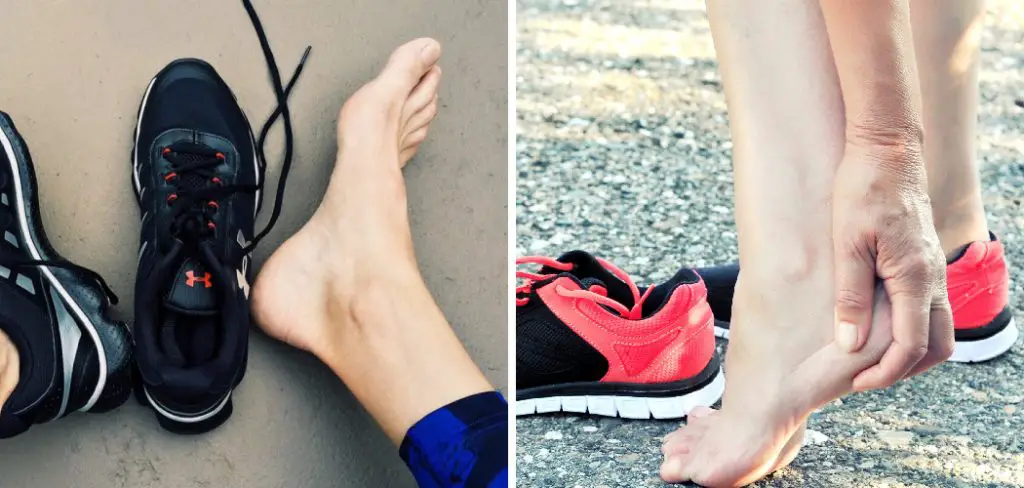
From pinching and rubbing to numbness and blisters, the indicators of an ill-fitting shoe are varied and often uncomfortable. In this guide, we’ll explore how to know if a shoe is too small, including physical discomfort, visible pressure points, and changes in foot appearance.
By learning to identify these symptoms, you can make informed decisions when selecting footwear and prioritize both comfort and style. Whether you’re shopping for everyday shoes or specialized athletic footwear, understanding the signs of an improper fit is key to ensuring your feet stay happy and healthy.
Common Misconceptions about Shoe Sizing
Many people believe that once they reach adulthood, their shoe size remains constant. However, this is a misconception as factors like weight gain, pregnancy, and aging can alter the size and shape of one’s feet over time. Another widespread belief is that shoes will eventually stretch to fit one’s feet comfortably.
While some materials may give a little, depending on the type, it’s not advisable to rely on this hope, especially for shoes made from less forgiving materials like synthetic leather or hard plastics.
Additionally, the idea that sizing is universal across all brands and styles contributes to improper fit choices. Sizing can drastically vary between different manufacturers, and even within the same brand, depending on the design and materials used. Understanding these misconceptions is essential for selecting shoes that fit well and avoid compromising on foot health and comfort.
Signs That Your Shoes Are Too Small
When trying on shoes, it’s not always immediately clear if they’re too small. Over time, however, certain signs emerge that indicate a poor fit. Here are some of the most common indicators:
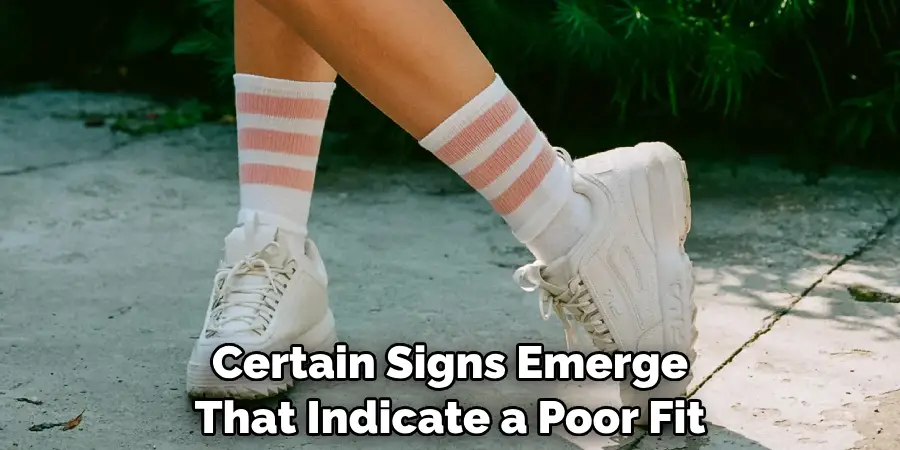
- Toes Touching the End of the Shoe: Your toes should have a bit of wiggle room at the front of the shoe. If they are pressed against the end, the shoes are likely too small.
- Persistent Blisters and Calluses: Regularly occurring blisters and calluses in specific areas, such as your toes or the back of your heel, suggest that your shoes are too tight, causing constant friction against your skin.
- Marks and Impressions on the Feet: After removing your shoes, check for red marks or indentations on your feet, particularly around the toes, the sides, and the top of your foot. These marks can indicate areas where the shoe is too constricting.
- Pain and Discomfort: Shoes that are too small can lead to foot pain, not just while wearing them but also potentially affecting you after they’ve been removed. Discomfort especially while walking or standing is a clear sign that your shoes do not fit properly.
- Difficulty Putting Shoes On and Taking Them Off: Struggling to put on or remove your shoes often means they’re not the right size. A proper-fitting shoe should slip on and off with relative ease, without needing to forcefully push your foot inside.
- Numbness or Tingling: Experiencing numbness or a tingling sensation in your toes after wearing shoes for a period indicates that your footwear is too tight, restricting adequate blood flow to your feet.
Recognizing these signs early on can save you a lot of discomfort and potential foot issues. Always prioritize fit and comfort alongside style when purchasing new shoes.
Understanding Shoe Sizing
Proper shoe sizing is foundational to foot comfort and health, yet it remains a complex subject for many. Shoes are typically measured by length and width, with sizes varying significantly between countries, brands, and styles. For instance, a size 9 in one brand may fit entirely differently from a size 9 in another brand. Additionally, men’s, women’s, and children’s sizes are categorized separately, which adds another layer of complexity.
To ensure the best fit, it’s recommended to measure your feet periodically, as their size can change over time due to factors like age, weight fluctuations, and health conditions. When measuring, do so later in the day when your feet are at their largest, and measure while standing to ensure your feet are fully expanded.
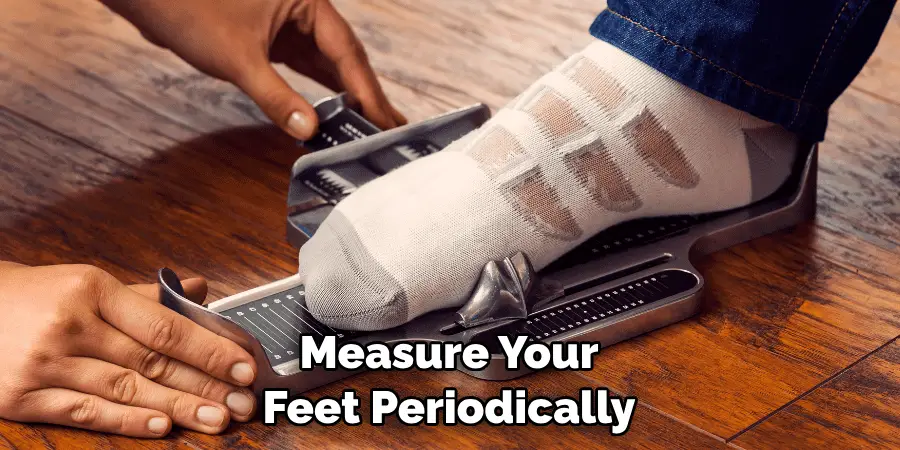
Width is another critical component of shoe sizing that often goes overlooked. Shoe widths range from narrow to extra wide, and selecting the appropriate width is just as important as choosing the right length to avoid issues like blisters, corns, and undue pressure on the sides of your feet.
Given these variables, the ideal approach to understanding shoe sizing is to not only know your own foot measurements but also to become familiar with specific brands and their sizing idiosyncrasies. Trying on shoes in-store whenever possible and researching size charts and customer reviews online can provide valuable insights into how a particular shoe fits. Remember, the goal is to find shoes that support and conform to the natural shape and movement of your feet, ensuring both comfort and style.
Differences Between Men’s, Women’s, and Children’s Sizes
Understanding the differences between men’s, women’s, and children’s shoe sizes is crucial when shopping for footwear. The primary distinction lies in the size and width of the shoes. Typically, men’s sizes are larger and wider than women’s. For example, a men’s size 10 would not match a women’s size 10; the women’s size would be significantly smaller and narrower. This discrepancy is due to the general anatomical differences between male and female feet.
In addition to size, the design and style of shoes also vary between genders, with men’s shoes often having broader fronts and a more squared shape, while women’s shoes may have a narrower design and come in a wider variety of styles, reflecting differing fashion trends.
Children’s sizes, on the other hand, are denoted differently, often ranging from size 0 (newborn) up to size 13.5 (youth), before transitioning into adult sizing. Unlike adult sizes, children’s sizes can overlap between boys’ and girls’ shoes, but the designs and styles often vary. It’s also worth noting that children’s shoes are made considering the growing phase, providing extra room for growth and offering support for developing feet.
Factors Affecting Shoe Fit Beyond Size Numbers
While measuring foot size is the first step in finding a well-fitted shoe, several other factors can influence how comfortably a shoe fits. These factors go beyond the basic number and letter system of shoe sizing and can significantly impact overall foot health and comfort.
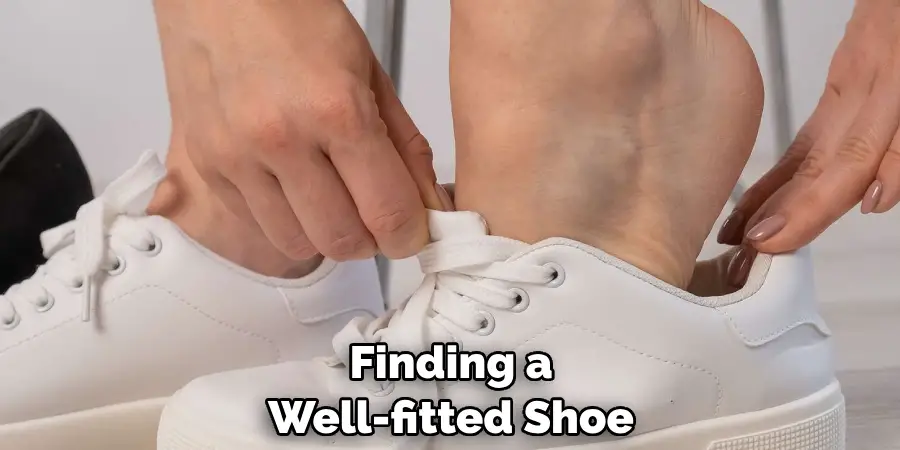
- Material: The material from which a shoe is made can affect its flexibility, breathability, and how it conforms to the shape of your foot over time. Natural materials like leather tend to stretch and mold to your feet, potentially altering the fit after prolonged wear, whereas synthetic materials may offer less give and flexibility.
- Design and Construction: The overall design and construction of a shoe play critical roles in fit and comfort. High heels, for example, redistribute the wearer’s weight, putting more pressure on the forefoot, while athletic shoes are designed with various types of support and cushioning for specific activities. The thickness and design of the insole can also affect how a shoe fits.
- Arch Support: Individual differences in arch type (high, medium, or low) can influence shoe fit and comfort. Shoes with inadequate arch support for your foot type may lead to discomfort or even foot disorders over time, despite being the “correct” size.
- Foot Width and Shape: Beyond the overall length and width, the shape of an individual’s foot can determine how comfortable a shoe feels. For example, some people may have a wider forefoot or a narrower heel, affecting how securely a shoe fits.
- Age and Lifestyle: Age can alter foot size and shape due to factors like natural changes in foot structure, loss of elasticity, and changes in body weight. Similarly, lifestyle choices such as the type of activities you engage in regularly can affect your requirements for shoe support and flexibility.
- Socks: The thickness and material of the socks you wear can change the internal environment of your shoe, affecting fit and comfort levels. Thicker socks may require a roomier shoe, whereas thinner socks provide a snugger fit.
Importance of Identifying Small Shoes
Wearing shoes that are too small is not just a matter of discomfort; it can lead to a spectrum of foot health issues that underscore the importance of correctly identifying and avoiding small shoes.
Squeezing feet into shoes that don’t fit properly can cause blisters, calluses, and corns, not just as immediate discomforts but as warnings of potential long-term damage. More severe consequences can include changes in foot structure, such as hammertoes and bunions, which arise from toes being cramped into too narrow spaces.
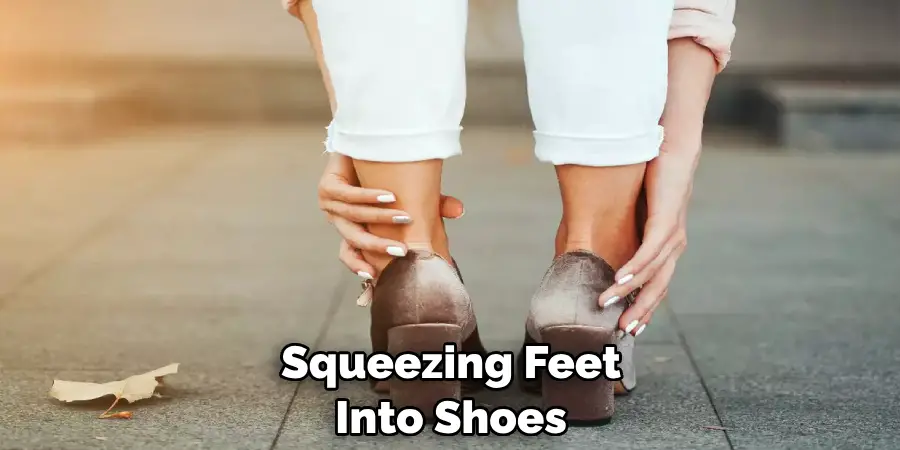
Additionally, underestimating the importance of space for toe movement inside the shoe can result in ingrown toenails and compromised circulation, especially in individuals with preexisting conditions like diabetes.
Beyond the physical ailments, shoes that are too small can also affect posture and gait, leading to musculoskeletal issues over time. The unnatural adjustment in walking patterns can place undue stress on the knees, hips, and back, illustrating that the implications of small shoes extend well beyond the feet themselves.
10 Methods How to Know if a Shoe Is Too Small
1. Check for Toes Pressing Against the Front
One of the most obvious signs that a shoe is too small is if your toes are pressing against the front of the shoe. Your toes should have enough room to wiggle comfortably without feeling cramped or squished. If you can feel your toes touching or pressing against the front of the shoe, it’s a clear indication that the shoe is too small. This can lead to discomfort, pain, and even toenail problems over time.
2. Pay Attention to Width
In addition to length, the width of the shoe is also important for proper fit. If your feet feel cramped or squeezed from the sides, it may indicate that the shoe is too narrow. Look for signs of redness or irritation along the sides of your feet, which can be a sign of excessive pressure due to a narrow shoe. Shoes that are too narrow can lead to blisters, calluses, and even nerve compression issues.
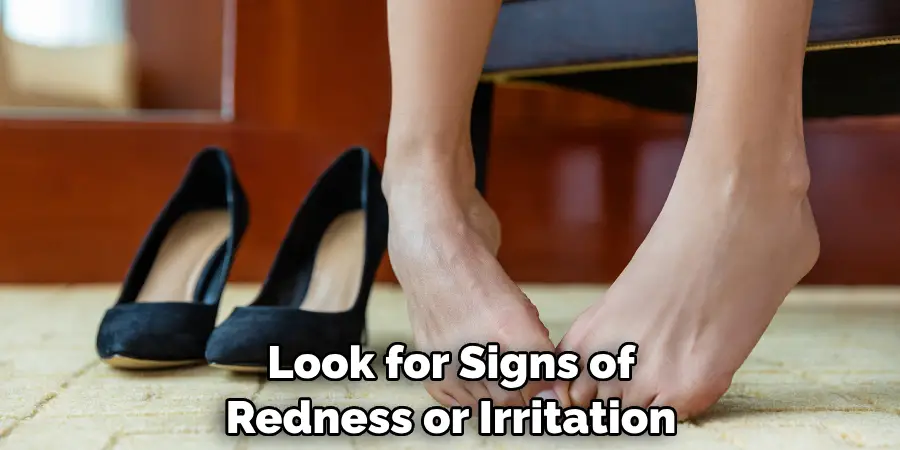
3. Check for Heel Slippage
While a shoe that is too small may feel tight in the toe area, it can also exhibit heel slippage, where your heel lifts up and down excessively with each step. This can occur if the shoe is too short in length or lacks proper support around the heel area. Heel slippage can lead to discomfort, blisters, and instability while walking or running.
4. Assess Comfort During Movement
Walk around in the shoes and pay attention to how they feel as you move. If you experience any discomfort, pinching, or rubbing against your feet, it may indicate that the shoes are too small. Take note of any areas of pressure or irritation, as these can lead to blisters, calluses, and other foot problems over time. Shoes should feel comfortable and supportive from the moment you put them on, with minimal break-in required.
5. Check for Numbness or Tingling
A shoe that is too small can restrict blood flow to your feet, leading to numbness or tingling sensations. If you experience these symptoms while wearing the shoes, it’s a sign that they are too tight and may be compressing nerves or blood vessels. Numbness or tingling can be particularly concerning and should not be ignored, as it can indicate potential circulation problems or nerve damage.
6. Examine the Flex Point
When trying on shoes, pay attention to where the shoe bends or flexes as you walk. The flex point should align with the natural bend of your foot, which is typically at the ball of the foot. If the flex point is in a different location or feels restricted, it may indicate that the shoe is too small or improperly sized. A shoe that bends in the wrong place can lead to discomfort, fatigue, and even foot injuries over time.
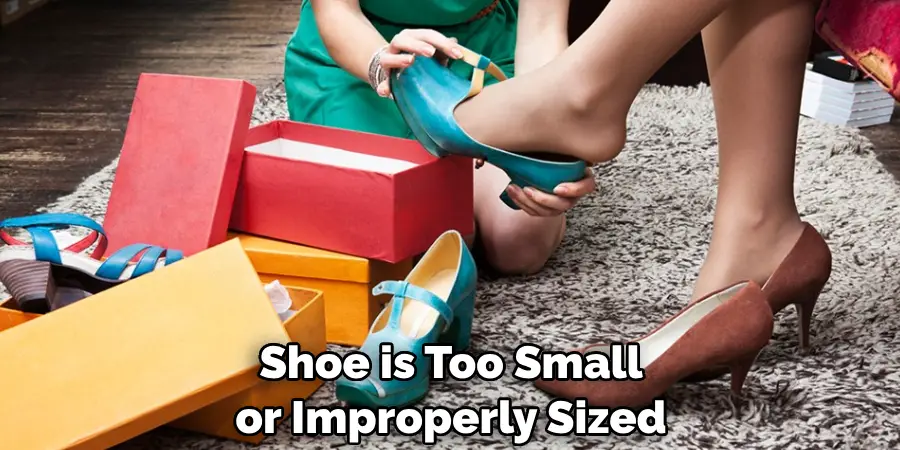
7. Look for Signs of Redness or Irritation
After wearing the shoes for a period of time, remove them and inspect your feet for any signs of redness, irritation, or pressure marks. These can indicate areas where the shoes are rubbing or causing friction against your skin, which may be due to a poor fit or shoes that are too small. Redness or irritation can lead to blisters, calluses, and other skin problems if not addressed promptly.
8. Check for Changes in Foot Appearance
Wearing shoes that are too small can cause changes in the appearance of your feet over time. Look for signs such as overlapping toes, corns, or bunions, which can develop as a result of prolonged pressure and friction from ill-fitting shoes. These changes in foot appearance are not only unsightly but can also be painful and difficult to treat without proper footwear adjustments.
9. Consider Time of Day
Feet tend to swell throughout the day, especially during periods of activity or in hot weather. When trying on shoes, it’s important to consider the time of day and the current state of your feet. If you try on shoes later in the day when your feet are swollen, they may feel tighter than they actually are. As a general rule, it’s best to try on shoes in the afternoon or evening when your feet are at their largest.
10. Seek Professional Advice
If you’re unsure whether a shoe fits properly, don’t hesitate to seek professional advice from a footwear specialist or podiatrist. They can provide expert guidance and assistance in finding the right shoe size and style for your feet.
Professional shoe fitting services are available at many shoe stores and specialty footwear retailers, where trained staff can assess your foot size, shape, and gait to recommend suitable shoe options. Additionally, a podiatrist can offer valuable insights into your foot health and recommend appropriate footwear based on your individual needs and preferences.

Conclusion
Choosing the right shoe size and fit is not just a matter of comfort; it’s a crucial aspect of foot health. Ill-fitting shoes can lead to a multitude of problems ranging from minor discomfort to serious health issues such as nerve damage and deformities.
By taking heed of the signs outlined above—such as toes pressing against the front of the shoe, tightness in width, heel slippage, discomfort during movement, numbness, incorrect flex point, redness, and irritation—you can avoid the negative consequences of wearing shoes that are too small.
Remember, your feet may change over time, so it’s wise to have your feet measured periodically and to try on shoes later in the day when they are most swollen. Thanks for reading, and we hope this has given you some inspiration on how to know if a shoe is too small!

